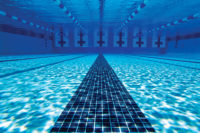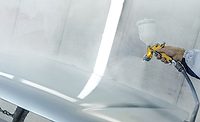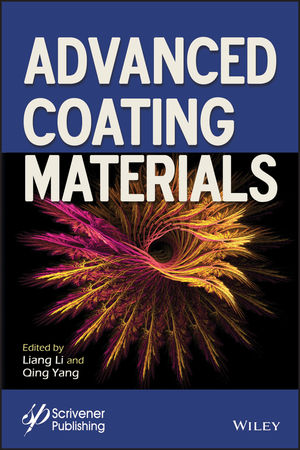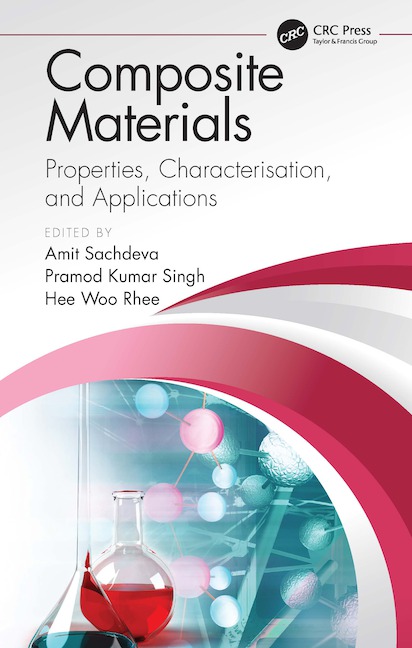Bridging Long Pot Life with Fast Cure at Low Temperature

The sheer size of the United States and the extreme differences in climates across the country mean there are a range of challenges facing the coatings industry. However, there are two considerations that remain a constant for formulators, regardless of location: compliance with new regulations and cost pressure.
When developing its new range of curing agents, Huntsman Advanced Materials, a division of Huntsman Corporation, wanted to support the industry in overcoming these issues and open up regional markets that had previously been inaccessible due to adverse weather conditions. The result was a new range of low-temperature coating technologies, Ara® Cool, which offers fast curing at lower temperatures and excellent surface appearance and adhesion properties. These features not only help reduce the whole life cost of a project and offer extended application windows to those working in cooler climates, but the products’ reduced VOC levels ensure new and future legislations can be met.
The development process was a direct result of feedback from customers. Through listening to their concerns it had become clear – particularly in cooler climates or areas with harsh winters – that there was a requirement for a product that could deliver high quality, and fast and reliable curing at low temperatures. In addition, customers in Europe were under pressure to meet new regulations that were being introduced (REACH 2018, the registration deadline for low-volume chemicals), which highlighted the growing concern and increasing stringency regarding the VOC formulation of products. With North America owning the second-largest market share of the global coating additives market,1 it was clear that any new products would need to be future-proofed in terms of new regulations that could be or were being introduced, wherever they were located. What’s more, they would need to offer real value in terms of cost.
A Whole Life Approach
Over recent years, there has been a move away from basing the cost of a project purely on the prices of its individual parts. Instead, a whole life approach is being taken, allowing the industry to better understand the impact of the cost of a product over 20 or 30 years. As such, we took a similar approach during the development process. This not only allowed us to better understand the issues and situations faced by customers, but led us to the conclusion that a fast-drying range could offer real value, for the following reasons:
• Improved drying times:
- Allows application periods to be extended into the cooler seasons
- Avoids breaks in the application schedules, saving man hours and reducing applicator costs
• Longer pot life:
- Less product waste
- Lower temperatures in drying ovens, saving energy and reducing utility bills
- Reduced curing time in ovens when cured at elevated temperatures
- Increased throughput of assembling lines
Once it was established that there were tangible benefits to developing a range of this kind, it was determined that any new products needed to meet regulatory requirements for low-temperature-cure applications, as well as those regulations being introduced in 2018 and beyond.
Choosing the Right Chemistry
Although there were several products on the market that offered either low-temperature curing, long pot life or low VOC levels, none offered all three, presenting a clear opportunity. The next step was then to understand which of the available chemistries was most suited to the products we wanted to create. To do this, we drew comparisons between the available curatives (surface tolerant RPAAs, modified phenalkamines and adduct hardeners in organic solvents), looking at curing speed at 5 °C, anticorrosion performance, VOC levels, pot life, and EHS and regulatory compliance.
Testing showed a variety of results. Although surface-tolerant RPAAs are the industry benchmark in terms of adhesion properties, they do not cure in temperatures below 15 °C, rendering them unsuitable. Modified phenalkamines, a Mannich-base type hardener, demonstrated better cure performance at temperatures between 8-15 °C, but had strong discoloration, significant levels of residual volatile amines and potential intercoat adhesion problems. Adduct hardeners in organic solvents allowed us to achieve fast dust and tack-free times at low temperatures, however extremely high viscosities meant a lot of solvent was required in formulations to achieve the right application viscosity, meaning we were unable to fulfil VOC requirements below 350 g/L.
As a result of the testing, all three of the chemistries were discounted. Initial trials had, however, shown that Mannich-base type chemistries could cure at temperatures from 0-10 °C, so we looked into this further, developing and testing several different chemical approaches using Mannich bases, until we achieved our desired outcome – a range of products that could meet a wide variety of industry requirements.
The different attributes of each chemistry and those of the final Ara Cool range can be seen in Table 1.

TABLE 1 » The different attributes of each chemistry tested.
A Range to Meet Industry Requirements
Each product within this new range of curing agents has been developed in response to specific industry requirements. All offer faster curing at low temperatures and reduced VOC levels, in addition to excellent surface appearance and adhesion properties.
For example, Ara Cool 3077 is zero-VOC, formulated amine benzyl alcohol and SVHC free, and has been designed to deliver superior reactivity at temperatures as low as 5 °C. It can be used either as the sole curing agent or a co-accelerator for slow hardeners.
For temperatures of 5 °C or less, Ara Cool 1047 W 80 offers superior surface appearance and excellent adhesion, even under humid or cold conditions. Developed for metallic surfaces, it offers at least the same anticorrosion performance as the best-in-class competitive technology and provides excellent corrosion protection for critical substrates that require fast hardness development in these conditions. Because it contains only about 20% solvent, it is suitable for use in solvent-containing formulations.
With extremely long pot life, Ara Cool 1034 XW 90 has a slightly higher viscosity, boasts an extremely long pot life and has outstanding low-temperature reactivity. A modified Mannich-base type ultrahigh-solid hardener for pretreated steel surfaces, it is SVHC-free and is extremely low VOC, with a solvent content of no more than 10% (Figure 1).

FIGURE 1 » Salt spray test results after 1008 hours on sand-blasted steel. Ara Cool 1034 XW 90 cured at 5 °C in combination with Araldite® GZ290X90.
Working for the Future
The overarching objective of developing the new range of curing agents was to provide our customers with products that could help them open up new markets through extended application windows. The fast cure speeds and longer pot life of Ara Cool allows for more efficient working, saving time and overall project expenditure, while its robust curing features reduce the risk of complaints. Furthermore, low VOC levels across the range have enabled compliant applications in harsh climate regions to provide customers with reassurance that the products are futureproofed to meet any new regulations that may arise.
For further information, visit www.huntsman-aracool.com.
References
1 www.persistencemarketresearch.com/market-research/coating-additives-market.asp
Looking for a reprint of this article?
From high-res PDFs to custom plaques, order your copy today!









